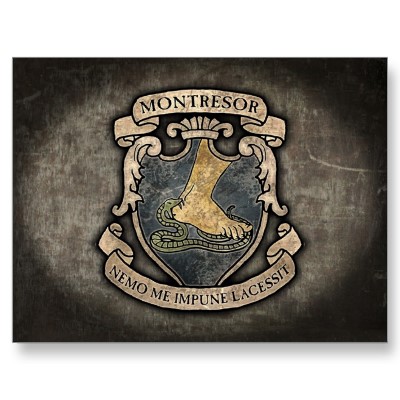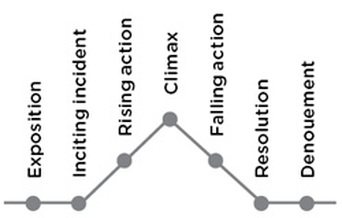Okay, here's what you need to remember about your TurnItIn.com account...
Your logon should be your Gaggle email address. If you forgot it, you should recover that GREEN sheet that was given to you in the library on the day of our tech orientation.
Your password should be your ID number + "ahs", so if your ID number is 123456, your password would be "123456ahs"
Afterwards, just upload your file and you are good to go.
Some other answers to frequently asked questions:
1. If your paper is slightly over or under 2 pages, please don't freak out. Your grade won't automatically be downgraded. If it approaches 3 pages or longer, your paper will be read with a bit more scrutiny, but it does not guarantee that you are getting a low grade, either. (But seriously, if it's shorter than 2 pages...you probably needed to add some detail and look at your teammates' suggestions.)
2. I know I put something about a 3rd Essay Peer Revision; just make sure your 3rd essay, marked, is in your collection and you will be fine. No extra sheet needed.
3. We didn't do "Clocking", we conducted the "Final Peer Review." Just put that sheet in its place.
4. If you will be absent on Friday, submit it tomorrow. Late is late, even with an excused absence. Take control and responsibility for your education.
5. Staple it and have it ready to go before class. Please.
6. If you don't want to open your Gaggle account, just right click and print the screen that shows your digital submission info after your paper uploads. That will suffice for the digital receipt.
7. Microsoft Word has a lot of helps/suggestions for formatting online; it just requires you to read. Painful, I know... But, if you need help, look it up.
8. Get some rest tonight. Notes tomorrow, and discussion of "Good Man" on Friday. If you are not present on Friday, finish reading the
Today, we talked about tone...and, depending on which class you were in, our Snickers-intoxicated actors gave us an interesting taste of the classic acting game, "Happy Mad Sad." Each person was asked to act one of the afore-mentioned emotions, conveying this through eating a candy bar.
Was this just a good excuse to send children home hyped up on sugar? On some level...sure. It's entertaining for me. But, the real point of the lesson is this: we need to "show" the actions and emotions in our stories; not merely convey them.
Here is the sentence I presented you in hopes of improvement: "S/He ate a Snickers."
Interesting iterations used the following techniques:
1. Additions of adjectives and adverbs to enhance words already within the sentence. Calling a Snickers a mere candy bar is actually downgrading the specificity in the sentence. Calling it a chewy, crunchy caramelly confection coated in chocolate not only breaks down what a Snickers actually is, it also uses alliteration. :-) (See figurative language.)
2. Replacing words, especially nouns and verbs, for more specific and pointed nouns and less passive verbs. To say that any of our Snickers-munchers merely ate the Snickers is unfair (if you were in 7th period...Marina did not simply eat that Snickers - she howled like a banshee and ate it like a boss, no offense to our friends in 2nd period).
So, to discuss that, I'd like to show you something called gradations of description. Let's use happy, mad, and sad as an example. There are different levels of happy, mad, and sad. How you want to convey an emotion in your story is entirely dependent on your gradations. Watch this: the following adjectives in each category will be listed from least extreme to most extreme -
HAPPY MAD SAD
satisfied annoyed melancholy
content aggravated solemn
happy mad sad
jubilant angered depressed
ecstatic infuriated suicidal
These are just three baseline adjectives that have these gradations. Consider what you want to get across to your reader.
3. Figurative language can make your story line pop and become memorable. If you need to describe a particular scene, and you're tired of listing a bunch of details, break out the figurative language and force the reader to use a little bit of their imagination. Let's return to the Snickers examples. Saying that someone hungrily ate a Snickers may not be enough.
So, we'll add a simile to the mix: She ate her Snickers bar hungrily, as if she had not experience earthly pleasure in a lifetime of waiting, and smiled as if she had witnessed religious miracles, content and calm.
The underlined part of this sentence is necessary - it gives us an image. The rest of the sentence helps with characterization, tone, and author's purpose.
By the way, if you like Snickers that much, they're easy to find. And, if you have an allergy, and excellent alternative is a Milky Way (or Starburst, if that's your thing).
Tonight, as you work on your rough drafting, remember that you have already told your story; that is what your Freytag's Pyramid was for last night. Now you have to show it. Bonne chance, mes amis. :-)
Until,
Ms. B
...You already know it's true. We sometimes feel like this when we test, and we often have these moments when we write a timed essay.
Take my advice: Don't. Just follow what I said today.
1. Check your thesis statement to make sure you answer the question completely. If you need a reminder, here's the question: According to the literary devices used in "The Cask of Amontillado", how does Poe want the reader to perceive Montresor as a character? Here's your instant check: a. Do you have words in your thesis that characterize Montresor (read: relevant adjectives and nouns)? b. Did you actually mention the specific literary devices you will discuss in your essay? If no, refer to DIDLS to clarify. c. Did you, um, mention the story title, Poe, and the reader in your thesis? Not all necessary, but think about how that might be a good idea.
2. If you have an introductory hook, and then BAM! a thesis statement appears, you might need "The Bridge." All "the Bridge" does is connect your introduction to your thesis with BROAD detail. Don't start quoting "Cask" just yet...save that for your body paragraphs. "The Bridge" gives the reader just a smidge of insight to why you would discuss the ideas of evil, inhumanity, sadism, etc. in an essay such as this.
3. Be smart - write a brief outline of your essay tonight, and refer to that revised thesis to make sure you have your bases covered. If you say you're going to discuss diction in the essay, by God, discuss some diction! If you say you're going to discuss figurative language in the thesis, and you focus on details for three body paragraphs, you have failed to prove your thesis...let's not do that. Let's make sure that we know what we're going to talk about come crunch time tomorrow.
The thesis statements I read in class today are about what I expected - lots of promise, and a few common widespread errors. It is something we will revisit over and over again over the course of the year, so don't fret yet. Also, I grade all timed writes as rough drafts, so worry about organizing your ideas. If your paper has an air of organization, your paper will be good to go.
Let's close "Cask" and get to a more modern story, with some creative writing on the side! Huzzah!
Tomorrow's Friday. We're almost there. And, you don't have homework this weekend. Bonus. (You love me...it's okay, send your adulation la
Okay, folks, here is your assignment...just in case any of you sainted children were absent (or if your goofy butt lost it...).
 | c_of_a_official_case_study_guide.pdf | | File Size: | 208 kb | | File Type: | pdf |
Download File
Also, for your reading pleasure, a couple of links to give you a little more schema about "C of A" and its unique setting. Vatican Necropolis (City of Catacombs) - This is a virtual tour of the catacombs underneath St. Peter's Basilica in Vatican City. There's a bit of a history lesson on the beginnings of Christianity as you go through, but at the very beginning of the tour is an amazing number of references to Greek and Roman mythology, Roman emperors, and examples of the most elaborately preserved catacomb ruins that exist today. Society 0f the Freemasons - They aren't telling any secrets, but they will give you the skinny. If you know your family has been in the US for a few generations, y0u should ask if any of your ancestors were Masons, or if you have living Masons in your family today. Take a looksie. See if you learn anything. Don't forget to do Section 3...especially since you're probably checking this to see if you had any homework. :-) See you tomorrow, Ms. B
Like Stewie often does, the dark side just, sometimes, wins. Tomorrow, we begin exploring the darker side of Edgar Allan Poe and American Romanticism. Though his subject matter may be morose and disturbing, there is no denying that the man was a genius with the written word and he borrowed from his not-so-charmed life's experience to bring an audience powerful poetry and prose. Here's a link to Poe's dedicated museum in Virginia, which includes a biography, a bibliography, and information about weekend tours to the nearest cemetary (ack!). Happy Reading. See you tomorrow.
Here is a link to the notes presentation I gave last Friday. All the Prezi stuff is here; you just have to copy the notes onto your own copy of Freytag's Pyramid if you were absent. Let me know if any of you have trouble accessing the presentation.
|






 RSS Feed
RSS Feed